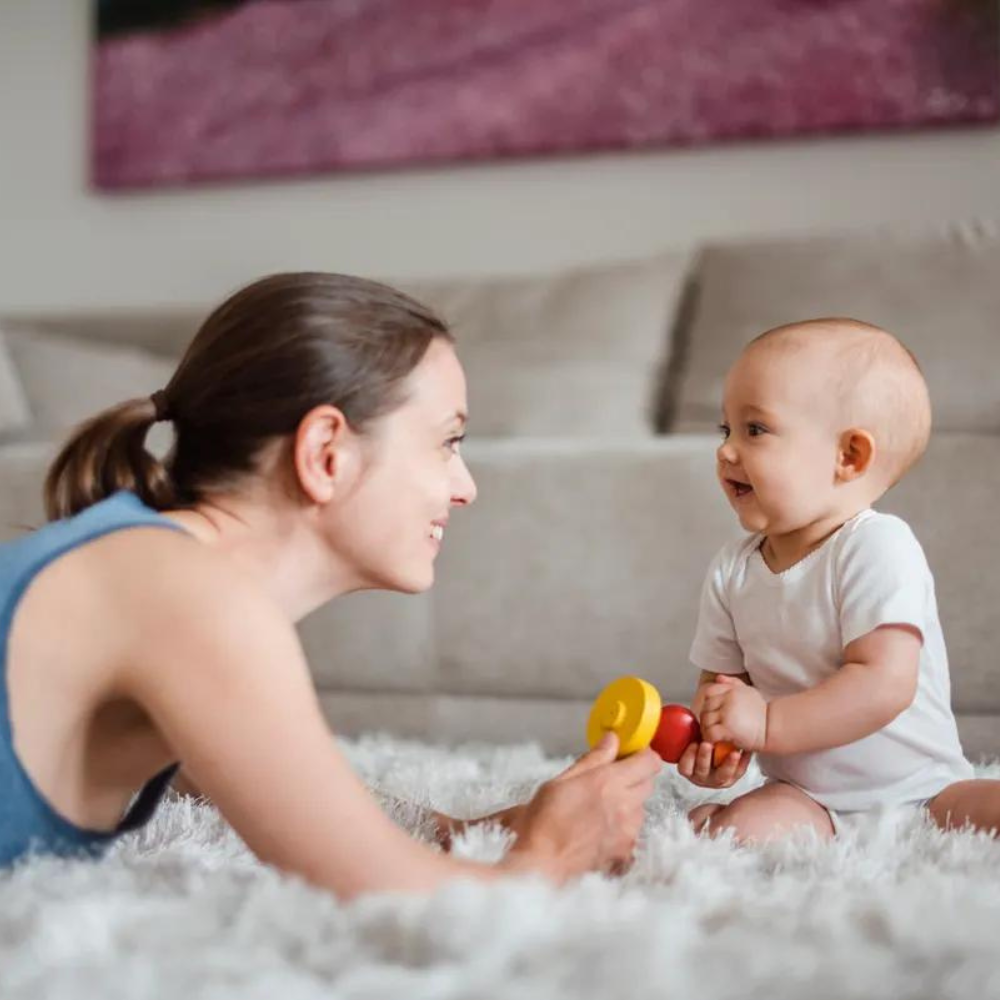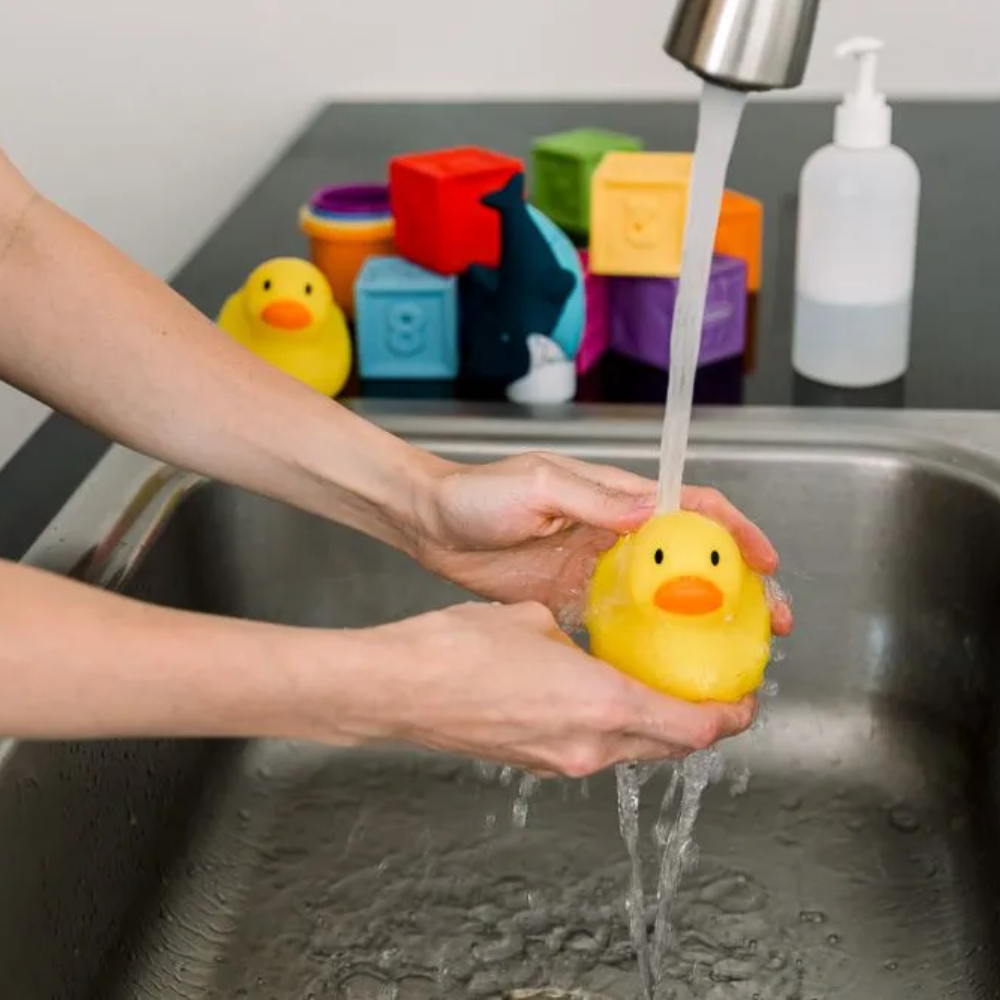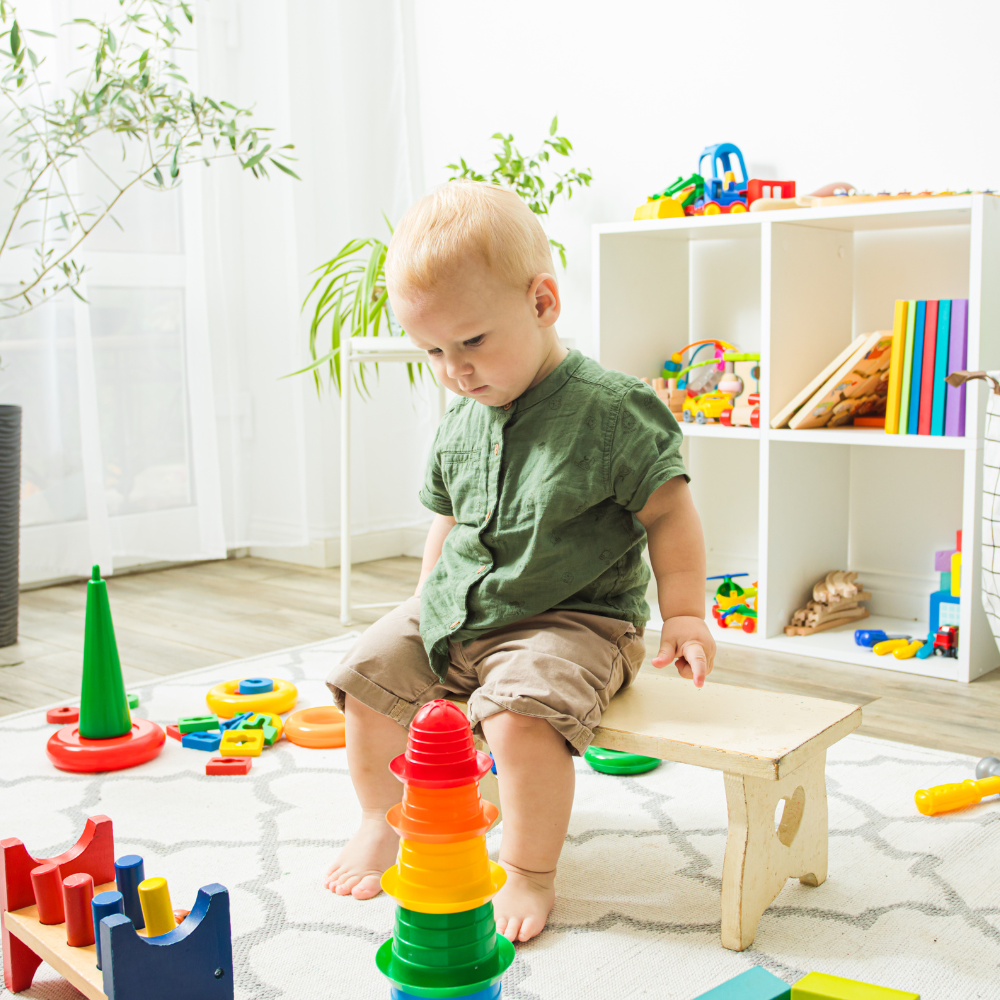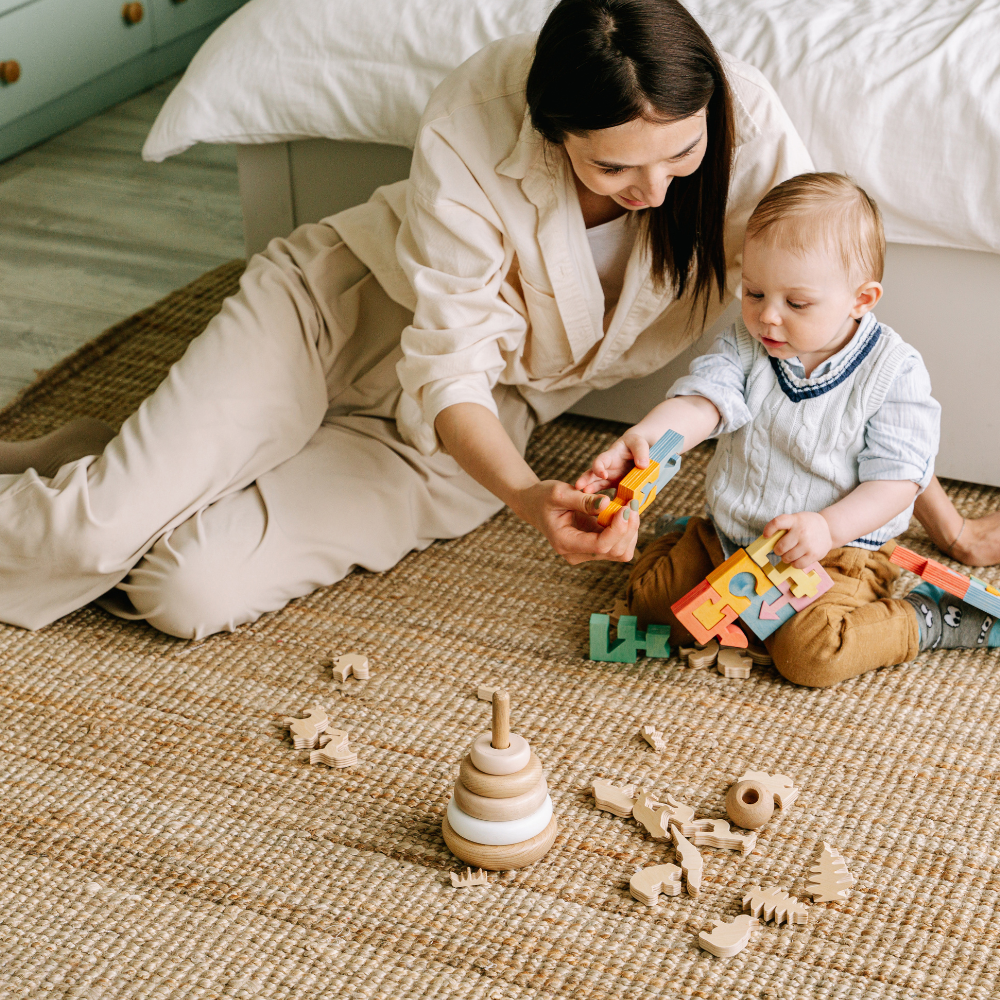Being a parent of a young child, it is essential to keep their toys clean and free from harmful bacteria. Babies love to explore and put everything in their mouths, making regularly sanitizing their toys crucial. Cleaning baby toys not only helps protect them from illness but also extends the toy's lifespan.
This guide will discuss some simple and effective ways to clean your baby's toys. We will also provide tips on how to choose the right cleaning products and methods based on the type of toy. Plus, we will share some important safety precautions to keep in mind when cleaning baby toys.
Why is it Important to Clean Baby Toys?

The immune system of babies is not fully developed, making them more susceptible to illnesses caused by bacteria and germs. As they grow and become more mobile, they tend to put everything in their mouths, including their toys. This puts them at high risk of ingesting harmful bacteria that can lead to various health issues.
Moreover, dirty toys can also become breeding grounds for mold and other allergens, causing respiratory problems in babies. Regularly cleaning your baby's toys helps to eliminate these hazards and create a safe environment for them to play in.
Keeping the toys clean also plays a role in maintaining their quality and durability. Dirt, grime, and bacteria can cause damage to the toys over time, making them less safe for your child to play with.
Safety Precautions
Before we dive into cleaning methods, it's essential to keep some safety precautions in mind. First and foremost, always read the manufacturer's instructions for cleaning the specific toy. Some toys may have special care instructions or are not suitable for certain cleaning products.
It is also crucial to use non-toxic and baby-friendly cleaning products. Harsh chemicals can be harmful to your child if they come into contact with them or ingest them while playing with their toys.
When using water-based solutions, make sure to dry the toys thoroughly before giving them back to your child. Moisture left on the surface can lead to mold growth, making the toy unsafe for your baby to play with.
Lastly, always supervise your child when they are playing with their toys, especially those that have been recently cleaned. This will ensure that they do not put the toys in their mouths before they have dried completely or come into contact with any cleaning residue.
How to Clean Baby Toys

The cleaning method for baby toys depends on the material and type of toy. Here are some general tips to keep in mind when cleaning your baby's toys:
Start by removing any visible dirt
The first step in cleaning baby toys is to remove any visible dirt and debris from their surfaces. This can be done by wiping the toys down with a dry cloth, brush, or a gentle duster. For toys with crevices and small parts, you may want to use a toothbrush or a cotton swab to reach those difficult areas. Removing this initial layer of dirt makes the subsequent cleaning process more effective, ensuring that you are not simply spreading dirt around.
If the toy is particularly soiled, you might need to rinse it under running water to dislodge stubborn grime before proceeding with deeper cleaning. For toys that shouldn't be immersed in water, like those with electronic components, careful use of a damp cloth to wipe away dirt can suffice. This preparatory step reduces the likelihood of contamination from dried-on dirt and germs, setting the stage for a more thorough and hygienic cleaning process.
Wash plastic and rubber toys with warm soapy water
Toys made of plastic and rubber can be easily cleaned with warm soapy water. You can use a mild dish soap or a gentle baby detergent for this purpose. Submerge the toys in the solution and gently scrub them with a cloth or brush to remove any dirt or germs. Then, rinse them thoroughly under running water to ensure no soapy residue is left behind.
You can also opt to clean these types of toys in the dishwasher, using the top rack and a delicate cycle. However, make sure to read the manufacturer's instructions beforehand to ensure it is suitable for the specific toy. After washing, let the toys dry completely before giving them back to your child to play with. Avoid using any harsh chemicals or abrasive materials on plastic and rubber toys, as they can damage the surface and potentially harm your child if ingested.
Use a disinfectant spray or wipes for hard plastic and electronic toys
Hard plastic and electronic toys that cannot be submerged in water can be cleaned with a disinfectant spray or wipes. Choose non-toxic products specifically designed for cleaning baby toys. Carefully follow the instructions on the product label, ensuring you cover all surfaces of the toy.
For electronic toys, it is essential to remove any batteries before cleaning and make sure the toy is completely dry before using it again. Avoid using harsh chemicals or bleach-based products on electronic toys as they can damage the components.
Regularly disinfecting these types of toys helps to eliminate bacteria and germs that may have accumulated over time, keeping your child safe from potential illnesses. It is also a good idea to clean these toys after playdates or if they have been shared with other children.
For fabric toys, check the care label and machine wash if possible
Fabric toys such as stuffed animals should be checked for a care label before cleaning. If machine-washing is allowed, use a gentle cycle with mild detergent and let the toy air dry completely. It is not recommended to put fabric toys in the dryer as it can damage them.
If the toy cannot be machine-washed, you can handwash it with warm soapy water and then air-dry it thoroughly. Make sure to pay attention to any areas that may have accumulated dirt or stains, such as the eyes or nose of stuffed animals.
Another option for removing germs from fabric toys is to place them in a plastic bag and freeze them for a few hours. This method kills bacteria and is particularly useful for toys that cannot be washed.
Regularly cleaning fabric toys helps maintain their appearance and prevents the build-up of germs, making them safe for your child to play with. If you notice any damage or wear on these types of toys, it's best to replace them to ensure your child's safety.
Top Toys for Babies

Now that you know how to safely and effectively clean baby toys, here are some top toy recommendations for babies:
Soft plush toys
Soft plush toys are perennial favorites among babies for their comforting texture and lovable designs. These cuddly companions can serve as a source of emotional relief and security for infants, especially during bedtime or when they are feeling anxious. Plush toys often come in various shapes and characters, from animals to popular cartoon figures, providing endless hours of imaginative play.
When selecting a soft plush toy for your baby, ensure that it is made from non-toxic and hypoallergenic materials to prevent any skin irritations or allergies. Safety is paramount, so choose toys with secure stitching and embroidered features instead of small plastic parts that could pose a choking hazard.
Additionally, make sure the plush toy is machine washable or easy to clean to maintain hygiene. Regular cleanings will help keep the toy free from dust mites and other allergens, ensuring a safe and huggable friend for your little one.
Bath toys
Bath time can be a fun and enjoyable experience for babies with the addition of bath toys. These toys come in various shapes, sizes, and materials, from rubber duckies to interactive water sprayers. They not only provide entertainment but also aid in developing hand-eye coordination and fine motor skills.
When choosing bath toys, make sure they are made from non-toxic materials and do not have any small detachable parts that could pose a choking hazard. It is also essential to regularly clean these toys after each use to prevent mold growth or bacteria accumulation.
Montessori toys
Montessori toys are designed to promote independent play and learning through hands-on activities that stimulate a child's senses. These types of toys focus on open-ended play, allowing children to explore and discover at their own pace. Some popular examples of Montessori toys include nesting blocks, sensory bottles, and shape sorters.
When selecting Montessori toys for your baby, look for those made from natural materials such as wood or cloth. Avoid plastic materials and opt for non-toxic paints or dyes. These toys are meant to be durable and long-lasting, so they can be passed down from generation to generation.
Teething toys
Teething can be a challenging time for babies, but teething toys can provide relief and comfort. These toys come in various shapes and textures, providing something safe and soothing for babies to chew on as their teeth come in. Some popular options include silicone teething rings, wooden teethers, and textured fabric or rubber toys.
When selecting teething toys, make sure they are specifically designed for teething and made from non-toxic materials. Avoid toys with small detachable parts or those that could easily break apart, posing a choking hazard. It is also essential to regularly clean these toys to prevent the buildup of bacteria and germs.
Textured or sensory toys
Babies learn through their senses, and textured or sensory toys are perfect for stimulating their development. These types of toys come in various shapes, sizes, and materials, providing different textures and experiences for babies to explore. Some examples include soft fabric books, rattles with different textures, and activity gyms with hanging objects.
When selecting textured or sensory toys for your baby, look for those made from non-toxic materials and do not have any small detachable parts that could pose a choking hazard. These toys should also be easy to clean and maintain, as babies will often put them in their mouths.
Mistakes to avoid when buying baby toys

When it comes to buying toys for your baby, here are some mistakes to avoid:
- Not considering age appropriateness: Always check the recommended age range for a toy before purchasing. Toys that are too advanced or complex can be frustrating and unsafe for younger babies. Plus, toys that are too simple may not stimulate enough interest for older babies.
- Buying too many toys at once: Babies do not need a lot of toys to keep them entertained. In fact, having too many choices can be overwhelming for them. Start with a few well-chosen toys and rotate them out periodically to maintain interest.
- Ignoring safety warnings: Always pay attention to any safety warnings or labels on toy packaging. These are in place for a reason and should not be ignored.
- Not considering your baby's interests: While it may be tempting to buy the latest popular toy, remember that every baby is unique and may have different interests. Consider your baby's personality and preferences when selecting toys.
- Forgetting about simplicity: Sometimes the simplest toys can be the most engaging for babies. Don't overlook classic toys like building blocks, stacking rings, or simple stuffed animals. These can provide endless learning opportunities for your little one.
- Not regularly cleaning and inspecting toys: It is crucial to regularly clean and inspect your baby's toys to ensure they are safe for play. This includes checking for any broken or loose parts and cleaning them thoroughly to prevent the buildup of bacteria.
Remember, always prioritize safety when buying toys for your baby. With careful consideration and regular maintenance, you can provide a variety of stimulating and age-appropriate toys that will aid in your baby's development and keep them entertained for hours.
FAQs
How do you clean plastic baby toys effectively?
To clean plastic baby toys effectively, wash them with warm water and mild soap. Use a soft brush to scrub any crevices and rinse thoroughly. Let the toys air dry completely before giving them back to your baby to ensure they are clean and safe.
What is the best way to clean wooden baby toys?
The best way to clean wooden baby toys is to wipe them down with a damp cloth and mild soap. Avoid soaking the wood, as excess moisture can damage it. After cleaning, allow the wood toys to air dry completely to prevent any potential warping or cracking.
How can I clean baby bath toys to prevent mold?
To clean baby bath toys and prevent mold, squeeze out any water trapped inside after each use and let them air dry completely. Once a week, soak the toys in a solution of warm water and vinegar or bleach (1 part bleach to 10 parts water), rinse thoroughly, and let the clean bath toys air dry.
How should I clean a beloved stuffed animal?
To clean a beloved stuffed animal, check the care label first. Many stuffed animals can be machine-washed on a gentle cycle with warm water. For those that can't, spot clean with a damp cloth and mild soap. Use a hair dryer on a low setting to speed up drying if needed, but let the stuffed animal air dry completely to avoid any mildew growth.
Can disinfecting wipes be used on baby toys?
Yes, disinfecting wipes can be used on baby toys, especially plastic toys. Wipe down the surfaces thoroughly and let them air dry. Ensure the toys are completely dry and free of any residue before allowing your baby to play with them.
How do I clean plastic toys that can't be submerged in water?
For plastic baby toys that can't be submerged in water, use disinfecting wipes or a cloth dampened with warm water and mild soap to wipe down the surface. Be sure to rinse off any soap residue with a damp cloth and let the toys air dry thoroughly.
Is it safe to use a hair dryer to dry baby toys?
Yes, it is safe to use a hair dryer on a low setting to dry baby toys, especially if you need to speed up the drying process. However, make sure the toys are not overheated and allow them to air dry completely to ensure they are free from moisture, which can promote mold growth.
Conclusion
In conclusion, choosing the right toys for your baby is an important decision. Consider their age, interests, and safety when making your selections. Bath toys, Montessori toys, teething toys, and textured or sensory toys are all great options to aid in your baby's development and keep them entertained.
Plus, by avoiding common mistakes and regularly cleaning and inspecting toys, you can ensure a safe and enjoyable playtime for your little one. Remember to have fun and let your baby explore their world through hands-on play with these carefully selected toys.
So, take the time to choose the right toys for your baby, and watch them thrive as they learn, grow, and play! So go ahead, shop smartly for your baby's toys and make every moment of their playtime count.
Subscribe to our email newsletter and unlock access to members-only content and exclusive updates.

Comments